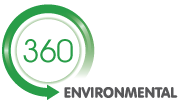MRF Code of Practice
The Environmental Permitting (England and Wales) (Amendment) Regulations 2014 apply the Materials Recycling Facility Code of Practice.
The requirements only apply to permitted Facilities; they do not apply to exempted facilities.
The Regulations DO NOT apply to facilities limited to:
- Waste transfer or bulking activities not involving sorting.
- Sorting just one stream, for example, paper does not qualify as a mixed waste.
- Incoming waste is unlike household waste (i.e. contains trade or industrial waste of a type clearly not present in significant quantities in waste from a household) or does not contain the target materials.
- Household waste recycling facilities (civic amenity sites). Placing incoming waste in specific piles/bays is not sorting for the purpose of these regulations.
- An industrial material recovery facility taking large sized waste (e.g. in skips), not comprising household or household-like waste.
- Only treating residual waste (‘dirty’ Materials Facilities), tending to be black bag mixed and wet waste – not dry recyclables.
- Mechanical Biological Treatment (MBT) unless Mixed Waste Material is accepted for any Materials Facilities operations that form part of the process.
- A Refuse Derived Fuel plant without a sorting facility.
- Waste Electrical and Electronic Equipment, waste batteries and accumulators.
- Separating only materials from construction and demolition waste (i.e. C&D Materials Facilities)
The requirements are due to take effect from 1 October 2014 and are specified in this Defra document.
They apply to any facility that receives more than 1000 tpa of mix of two or more of the following materials for sorting:
- Paper/card
- Glass
- Metals
- Plastic.
Obligated sites are required to self-assess whether they are obligated.
From 1 October 2014 at the start of each quarter, obligated facilities must assess whether they will be likely to exceed the threshold over the forthcoming 12 months.
The EA must be notified before the end of a quarter if a facility is obligated.
The facility must provide a report to the EA by the end of the month following a quarter.
For input materials, the minimum sample weights are:
- One sample per 160 tonnes must be taken (125 tonnes from 1 Oct 2016) related to each supplier.
- Samples must average at least 60kgs with the minimum sample size being 55kgs.
- The composition of the sample must be measured showing the types and weight (kgs) of target, non-target and non-recyclable material.
For output materials the minimum sample weights are:
- glass 10kg
- metals 10kg
- paper 50kg
- plastic 20kg
The sampling frequency depends on the material:
- glass: a 10kg sample for every 50t you produce
- metals: a 10kg sample for every 20t you produce
- paper: from 1 October 2014 to 30 September 2016, you must take a 50kg sample for every 80t you produce; then from 1 October 2016 you must take a 50kg sample for every 60t
- plastic: from 1 October 2014 to 30 September 2016, you must take a 20kg sample for every 20t you produce; then from 1 October 2016 you must take a 20kg sample for every 15t you produce
Records must be kept for 4 years:
- Total weight from each supplier
- Weight and composition of each mixed waste material stream from each supplier.
- Weight and to whom it is sent of residual waste output.
- Weight and to whom it is sent of mixed waste for separation at another MRF.
- Weight of each material type leaving the MRF and where it is sent.
- Weight and composition of each specified output material sample identified by grade.
The Environment Agency will publish results of reports but the format and the amount of data to be published have not yet been announced.
The EA required to carried out at least two inspections a year:
- One formal and announced.
- Second one unannounced.
A consultation is underway with proposals to charge each registered facility £2240/annum regardless of size of activity.
